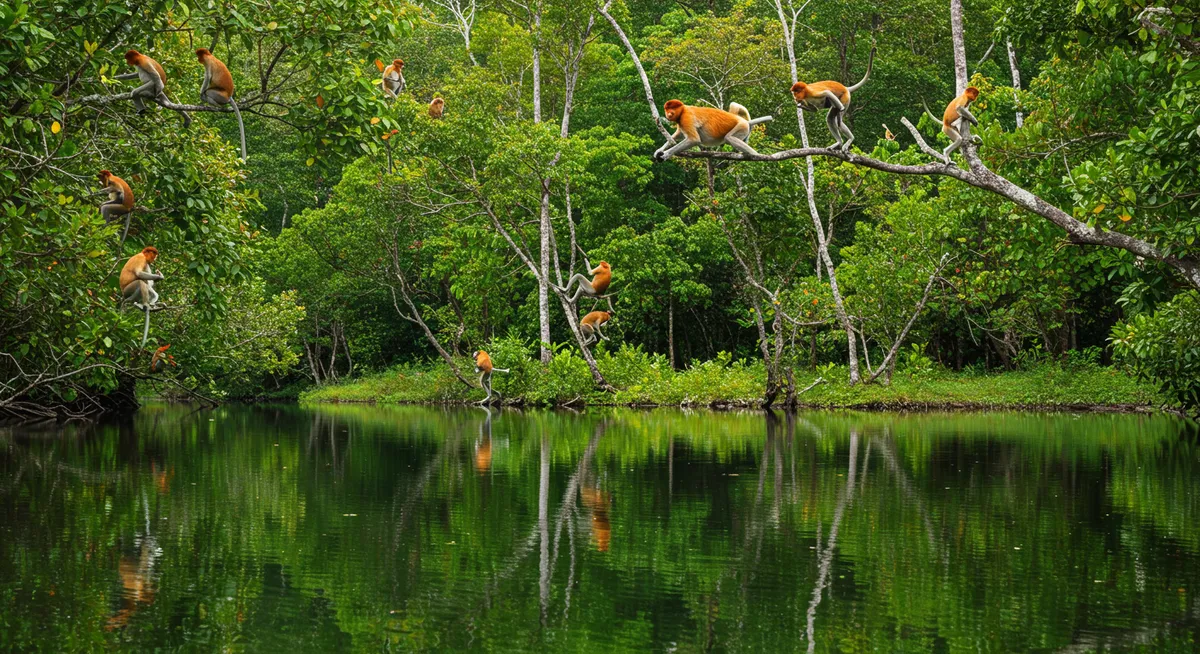
Best Time to Visit Miri National Parks 2025
Table of Contents
Want to find the best nature experiences for this destination? Chat with our nature tourism specialist!
Get Nature TipsCategory: best-time-to-visit-miri-national-parks-2025
Your Guide to the Best Time to Visit Miri National Parks in 2025
As a seasoned explorer of Southeast Asia's natural wonders, I've learned that timing is everything, especially when planning a trip to Miri's incredible national parks. From the towering peaks of Mulu to the ancient caves of Niah and the lush rainforest of Lambir Hills, each offers a unique experience. Knowing the best time to visit Miri national parks 2025 is crucial for maximizing your adventure, ensuring clear skies for trekking and optimal conditions for wildlife spotting. This guide will help you navigate Miri's tropical climate, ensuring your journey through these natural treasures is nothing short of spectacular. Discover Miri's nature attractions beyond the parks for a comprehensive travel experience.
Understanding Miri's Tropical Climate
Miri, located in Sarawak, experiences a tropical rainforest climate, meaning it's generally hot, humid, and wet year-round. However, there are distinct seasons that influence your visit to the Miri national parks. The region typically has two main seasons: the dry season and the wet season. The dry season, running roughly from March to October, offers more consistent sunshine and lower humidity, making it ideal for outdoor activities and cave exploration. Conversely, the wet season, from November to February, brings heavier rainfall, which can sometimes impact accessibility to certain areas. From my personal experience, even during the wet season, downpours are often brief, followed by sunshine, but trails can be muddy. Understanding these patterns is key to planning the best time to visit Miri national parks for your adventure.
Mulu National Park: The Ideal Visiting Window
For an unparalleled experience at Gunung Mulu National Park, the dry season, specifically from March to October, is generally considered the optimal time. During these months, the weather is more stable, allowing for easier exploration of the vast cave systems like Deer Cave and Lang Cave, as well as the challenging climbs to the Mulu Pinnacles. Rainfall is less frequent, which is crucial for trails and for witnessing the spectacular bat exodus from Deer Cave. While Mulu is open year-round, visiting outside this window increases the chances of heavy rain, which can lead to flash floods in caves or make trekking difficult. Consider exploring Mulu National Park tours from Miri that cater to these prime conditions for a smoother journey.
Niah & Lambir Hills: Best Times for Caves & Rainforest
Similarly, for Niah National Park and Lambir Hills National Park, the dry season (March to October) presents the most favorable conditions. Niah's archaeological sites and the Great Cave are best explored when trails are dry, making it safer to navigate the boardwalks and pathways. My own excursions have taught me that during the wet season, the pathways can become slippery and challenging. For Lambir Hills, known for its biodiversity and waterfalls, less rain means clearer water for swimming and more comfortable jungle trekking. The trails through the ancient rainforest are more accessible, allowing visitors to fully appreciate the rich flora and fauna. Delve into the Niah Caves' historical significance and consult the Lambir Hills National Park guide to plan your visits during these ideal periods.
Navigating Miri National Parks During Shoulder & Wet Seasons
While the dry season is ideal, visiting Miri national parks during the shoulder months (November/February) or even the full wet season isn't entirely discouraged. These periods often see fewer tourists, offering a more tranquil experience. Be prepared for rain showers, which can be intense but typically short-lived. Essential gear includes waterproof clothing, sturdy trekking shoes, and insect repellent. Some trails or cave sections might be temporarily closed due to heavy rain, so always check with park authorities beforehand. Despite the rain, the rainforest is at its most vibrant, and waterfalls are at their fullest. My personal tip: Embrace the humidity and focus on early morning starts to beat both the heat and potential afternoon downpours for the best time to visit Miri national parks, even off-peak.
Frequently Asked Questions
What is the driest month to visit Miri national parks?
Can I visit Miri national parks during the wet season?
Are the national parks crowded during peak season?
Choosing the best time to visit Miri national parks 2025 significantly enhances your adventure, allowing for optimal exploration of Mulu, Niah, and Lambir Hills. While the dry season (March to October) offers the most favorable conditions for trekking and cave expeditions, understanding the climate allows for enjoyable visits year-round with proper preparation. Prioritize safety, check park advisories, and equip yourself for the tropical environment. Ultimately, planning your trip during the ideal window ensures you fully immerse yourself in the natural grandeur and unique biodiversity of Miri's incredible national parks. Start planning your unforgettable Sarawak adventure today!